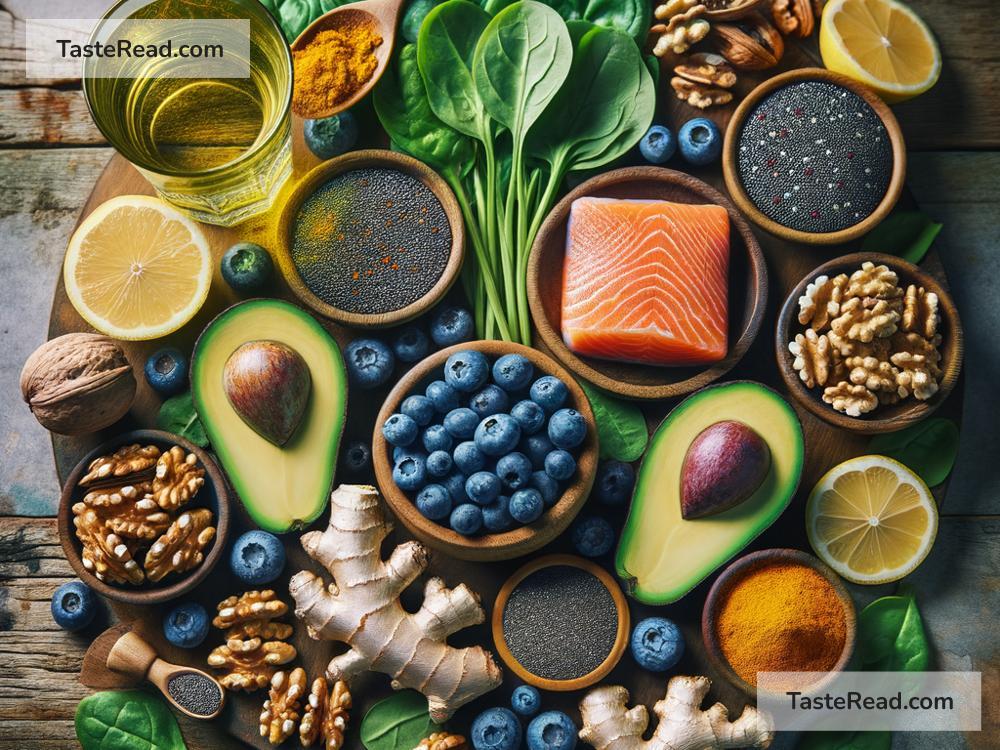Foods for Enhancing Flexibility: Fuel Your Body for Stretching Success
Flexibility is an important part of physical health. Whether you’re a yoga enthusiast, a beginner in stretching exercises, or simply someone who wants to move a little more freely, your diet can play a big role in improving flexibility. Eating the right foods can support your muscles, joints, and overall mobility, making it easier for your body to bend, stretch, and move without pain or stiffness.
In this article, we’ll explore simple, everyday foods that can help enhance flexibility and keep you feeling light and limber.
Why Diet Matters for Flexibility
Flexibility depends on healthy muscles, supple joints, and hydrated connective tissues, such as tendons and ligaments. All of these rely on proper nutrition to stay strong and elastic. Certain nutrients—like vitamins, minerals, and healthy fats—play a key role in improving your muscles’ ability to stretch and recover after exercise. By eating a balanced and nutrient-rich diet, you provide your body with the tools it needs to maintain and improve its flexibility.
Foods That Boost Flexibility
Here are some foods that are particularly good for supporting flexibility:
1. Leafy Greens
Spinach, kale, arugula, and other leafy greens are packed with magnesium. Magnesium enhances muscle function and helps reduce stiffness in your joints. Greens are also loaded with antioxidants, which reduce inflammation and support faster recovery after stretching or exercise. Include a fresh salad, smoothie, or sautéed greens in your daily meals to give your muscles some love.
2. Oranges and Citrus Fruits
Vitamin C, found in oranges, grapefruits, lemons, and limes, is key for maintaining healthy connective tissues. It helps your body produce collagen, which supports your tendons, ligaments, and even skin elasticity. When your body has enough collagen, you’ll feel less tightness in your muscles and joints, making stretching easier.
3. Fatty Fish
Salmon, mackerel, and sardines are rich in omega-3 fatty acids, which reduce inflammation and support joint health. Flexible joints are a must for improving range of motion, and omega-3s help keep them lubricated. If fish isn’t your thing, chia seeds, walnuts, and flaxseeds are good plant-based sources of omega-3s.
4. Turmeric
Turmeric is a powerhouse spice, famous for its anti-inflammatory properties. When your muscles and joints feel inflamed or sore, turmeric can help ease the discomfort and promote better mobility. Sprinkling some turmeric into soups, stews, or smoothies can make a big difference, especially after a workout session.
5. Bananas
Bananas are full of potassium, which helps maintain electrolyte balance in the body. Electrolytes are crucial for proper muscle function and preventing cramps. After a stretching session or yoga class, snack on a banana to restore potassium levels and keep your muscles relaxed.
6. Sweet Potatoes
Sweet potatoes are a rich source of beta-carotene and vitamin A, essential for maintaining the health of your connective tissues. Additionally, they contain complex carbohydrates that provide sustained energy for physical activity. Roasted sweet potatoes are a delicious way to give your muscles the nutrients they need to stretch comfortably.
7. Avocado
Avocados are loaded with healthy fats that keep your joints lubricated and flexible. They also contain anti-inflammatory nutrients, like vitamin E, which help reduce stiffness. Whether you spread avocado on toast or add it to salads, it’s a creamy, delicious way to support joint health and mobility.
8. Whole Grains
Whole grains such as oats, quinoa, and brown rice provide energy for your body during physical activities. These complex carbohydrates also contain B vitamins, which help reduce muscle fatigue. When your muscles are energized and functioning well, stretching becomes much more effective and enjoyable.
9. Ginger
Ginger is another anti-inflammatory food that works wonders for muscle health. It may help reduce soreness or stiffness after stretching or exercise. You can enjoy ginger in tea, soups, stir-fries, or smoothies as a natural way to improve flexibility and comfort.
10. Watermelon
Staying hydrated is key to flexibility. Watermelon contains water and electrolytes, making it a refreshing treat to keep your muscles and joints hydrated. Proper hydration supports elasticity in your tissues, so don’t forget to drink plenty of water and eat hydrating fruits like watermelon.
Stay Hydrated for Flexibility
Water deserves special mention, as hydration is critical for flexibility. When your body is dehydrated, your muscles and joints lose their ability to stretch properly and may feel stiff or tight. Drinking enough water daily can help keep your tissues elastic and mobile. Pair hydration with foods rich in water—like cucumbers, celery, and melons—for extra support.
Wrap-Up: Flexible Eating for a Flexible Body
Improving flexibility isn’t just about stretching exercises; what you eat also plays a big role. Foods rich in essential nutrients can nurture your muscles, lubricate your joints, and reduce inflammation—helping your body move more freely and gracefully.
Incorporate leafy greens, citrus fruits, fatty fish, and other flexibility-boosting foods into your diet to give your body the fuel it needs to bend and stretch with ease. Don’t forget to stay hydrated and listen to your body—it’s the best guide for your health journey.
So, grab a bowl of salad, sip some water, and enjoy your stretches! With the right diet, you’ll be feeling more flexible in no time.


